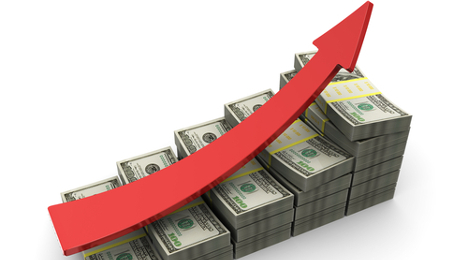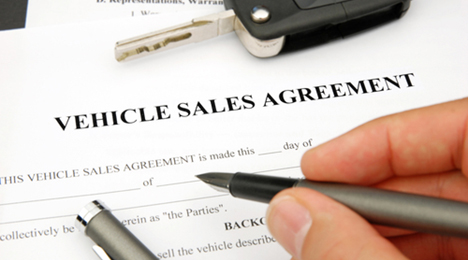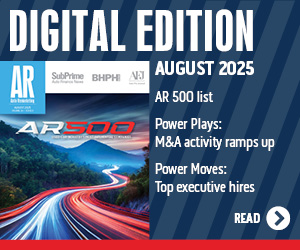After reporting a 15-percent increase in used retail revenue, Asbury Automotive execs delved deeper into the topics of used margins and pre-owned inventory, and also gave an update on the dealer group’s standalone used-car outlet program, Q Auto.
Although Asbury dealers were bringing in revenue of $21,238 per used vehicle retailed, up 9 percent from $20,860 during Q2, gross profit was down slightly at $1,653, falling from $1,789 during Q2 2014.
During the conference call to discuss the quarter, margin pressures, both new and used, were a focus of investors.
Craig Monaghan, president and chief executive officer and director at Asbury, said that the dealer group saw an increasingly competitive environment in Q2, a contributor to margin pressure, explaining this was most prevalent in the midline import sector.
“And midlines alone represented about two-thirds of our decrease in gross profit. And we believe that was largely attributable to the impact of very low gas prices,” he said. “It hit particularly hard in the car segment as opposed to SUVs. But we also saw, as you see in the numbers here, we saw some pressure in luxury as well. And what we sense there is it's a shift in consumer preference to lower-priced vehicles.”
David Hult, chief operating officer and executive vice president at Asbury, shared that on the used side of the business, the dealer group is very focused on driving volume.
“We see the benefits from our reconditioning growth, I mean our incremental F&I dollars, and feel like we have a pretty good balance offsetting that margin pressure to increase that volume,” Hult added.
The execs were also asked to give an outlook on used gross profit per unit going forward, and they both agreed “it’s tough to predict the future.”
That said, Hult shared the company is focused on its reconditioning work, noting this is a big “value add.”
“So, when we increase the cost into the vehicle, it's certainly going to depress some of the margin, but we feel it's a more than a fair trade-off and we've been happy with our results so far,” Hult said.
Another metric that caught investors’ attention was the fact that the company’s used vehicle day supply was at 36 days in Q2, which is just slightly above its targeted range of 30 to 35 days.
Listeners wanted to know whether this slightly elevated number was due to its new stand-along used-car outlet program, Q Auto.
The Asbury team explained the increase is not likely connected to Q Auto — which currently includes just three stores — and more to do with seasonality.
“That inventory build would have very little to do with the Q stores. They're running at inventory levels that are pretty much in line with what we do at our core stores,” said Monaghan. “So, I think that's just a build in the core stores. It's just a little bit higher than what we would normally expect. So, we don't see that as being unusual in any way, shape or form.
Instead, Asbury attributes the increase to being in the “heat of our selling season,” as July and August are some of Asbury’s bigger months,
“So carrying that excess inventories is a strategic and smart move, I think, on our part,” said Hult.
The company also gave an update on the Q Auto brand and where it might be heading in years to come.
Monaghan reiterated a point he has made throughout the first half of the year, noting that Q Auto has the potential to be a huge business for the company, but they have to solve the "riddle."
“And I think we're very much in the mode today of solving that riddle. We think the three-store format is an ideal way to go about it. And we've got a medium, a small and a large format that are in three different markets,” said Monoghan. “It allows us to experiment with a lot of different things, including technologies. We've got a major piece of technology that we're actually rolling out in the stores as we speak. We think it will significantly improve our customer experience, make our employees in the stores more efficient.”
Asbury also traditionally takes about 35,000 cars a year to the auctions, and Q Auto is a way to retail some of those units.
“But it's not easy. If it were easy, there would be many others out there selling used vehicles in a standalone format in a big way. We know that's not the case. So, it takes some time. It takes some commitment,” Monaghan said. “We feel like we're making very good progress. We lost $0.02 this quarter. Our objective is to drive this thing to profitability before we take the next step. And we feel like we're on that path.”
Before wrapping up the call, the Asbury team gave an update on the apparent uptick in acquisition activity, as the company secured another Florida store and expanded its presence in the Atlanta market, as well.
Looking ahead, Monaghan shared the company is open to bigger platform deals and actually prefers larger stores to smaller dealerships, as they prove to be easier to operate.
The company also will be focusing on stores that are in the dealer group’s current “footprint.”
“We think proximity matters. We run an organization structure, where we allow our general managers to run the stores. But we do have support teams that are there to help them. And if it's easier for those support teams to get to a store, we think there is real incremental value that comes from that,” Monaghan explained.
Price is also a factor, as the team shared they are “not going to pay more for it (acquisition) than where our company trades.”
“So, typically, we look to pay less and then hope to bring synergies so that we can get real incremental value out of an acquisition. With respect to brand, though, we're pretty much wide open. We're just looking for things that make economic sense,” he concluded.
Asbury Automotive Group released its second-quarter results Tuesday morning, reflecting a significant increase in used-vehicle retail revenues.
Total revenues were up 12 percent to $1.7 billion while gross profit increased by 9 percent, boosted in part by a 15-percent spike in used vehicle retail revenue.
"Our current quarter results demonstrate, once again, the strength and diversity of our business model," said Asbury's executive vice president and chief operating officer, David Hult. "We increased revenue 12 percent, increased gross profit 9 percent, and controlled our costs to deliver an operating margin of 4.9 percent."
Taking a look at the company’s used-vehicle performance, in particular, used-vehicle retail revenues rose to a high of $507.6 million, up from $445.3 million during Q2 of 2014. Year-to-date, the company has brought in $981.0 million in used-vehicle retail revenue, up from $862.2 during the same period of 2014.
Contributing to these impressive statistics is a ramp up in used-vehicle retail sales.
On a same-store basis, the company sold 19,964 used retail units in Q2, up from 18,840 sold during the second quarter last year, marking a 6-percent year-over-year increase.
Same store revenue per used vehicle retailed was also on the rise. For Q2, Asbury dealers were bringing in revenue of $21,238 per used vehicle retailed, up 9 percent from $20,860 during Q2 or 2015. That said, gross profit was down slightly at $1,653, falling from $1,789 during Q2 2014.
Hult touched on this in more detail during the company’s conference call to discuss second-quarter results, noting, “Our used vehicles performance is critical to the health of our dealerships. During the quarter, we drove our sales volume up 6 percent, while maintaining healthy inventory levels.
“In pushing volume, we sacrificed some margin, but this was more than offset by our incremental F&I opportunity and our robust reconditioning growth,” he continued.
He also shared that the company’s vehicle day supply was at 36 days in Q2, which is just slightly above its targeted range of 30 to 35 days.
Other factors contributing to overall positive Q2 results for Asbury were great performances in the F&I office as well as parts and service.
F&I gross revenues were up by 16 percent, while parts and service gross profit spiked by 14 percent.
Hult said during the call F&I per vehicle retailed for the quarter came in at $1,373, up $42 on a year-over-year basis.
“The lending environment remains favorable,” he added.
Part and service success was due in part to a significant increase in reconditioning and warranty work.
“Our parts and service revenues grew 8 percent and gross profit grew 10 percent compared to the second quarter of 2014. Our customer pay business, which represents approximately 54 percent of our parts and service gross profit, increased 5 percent from the prior year. In addition, reconditioning work was up 15 percent and warranty work was up 26 percent,” Hult said.
The dealer group was also busy during the second quarter on the acquisition front, securing two new stores, on top of repurchasing $54 million of common stock during the second quarter.
The dealer group purchased Mike Davidson Ford in Jacksonville, Fla., which brings with it approximately $90 million of annualized revenues.
And Asbury also expanded its presence in the Atlanta market with the purchase of Capital City Nissan, which rakes in approximately $70 million in revenues each year.
Editor’s note: For more reaction from Asbury executives about their latest quarterly performance, watch for a report in an upcoming edition of Auto Remarketing Today.
Fueled in part by achieving the milestone of retailing 100 used units per store per month for the quarter on a same store basis as well as making strides with its Echo Park specialty dealerships, Sonic Automotive set a new record for used-vehicle sales during the second quarter.
The dealer group reported on Monday that its Q2 used sales came in at 30,301 units, which represented a year-over-year gain of 6.3 percent.
Sonic also highlighted that its Echo Park stores — which are part of a new used-sales strategy with rooftops near Denver — retailed 881 units in the second quarter. That’s up 221 units, or 33.5 percent, from the prior quarter.
The company also posted two other records. Officials reported record Q2 total gross profit of $355.6 million, up 2.5 percent over the prior year quarter
Sonic also enjoyed all-time record quarterly fixed operations gross profit of $170.2 million, up 6.5 percent over the prior year quarter.
All told, the dealer group reported adjusted net income from continuing operations for the second quarter of $23.4 million, or $0.46 per diluted share. Included in these adjusted amounts are pre-tax expenses of $4.1 million, or $0.05 per diluted share, related to EchoPark operations.
Even with that bottom-line performance, it was the used department that got Sonic brass buzzing, including president Scott Smith.
“I’m proud of our operations team for achieving the lofty goal of retailing 100 pre-owned vehicles per store per month,” Smith said in a company statement made available with its Q2 report.
“We have had quarters in the past when we approached achieving this metric and several months where we surpassed this metric, but it had never been achieved on a quarterly basis,” Smith continued. “Generating this type of retail activity fuels our fixed operations and F&I areas where we are most profitable.”
Smith also touched the achievement in fixed operations.
“We also worked to build our fixed operations business in the quarter,” Smith said. “In addition to the benefits we experienced through the reconditioning work performed to achieve the sale of 100 pre-owned vehicles per store per month, we were able to grow overall same store fixed operations gross profit $13.1 million, or 8.5 percent, compared to the prior-year quarter.
“Fixed operations growth was achieved in our customer pay, warranty and internal categories,” Smith went on to say. “This type of internal growth strategy is central to our One Sonic-One Experience (OSOE) initiative which is intended to grow the top-line revenue categories, generate retail activity, and realize benefits over multiple gross profit streams."
Sonic executive vice president of operations Jeff Dyke used the company’s quarterly press release to give an update on other part of the dealer’s group’s business, insisting that “We had another very busy quarter at Sonic Automotive.”
Dyke continued with, “From a franchise store perspective, we executed our playbook and delivered another solid operating performance allowing our team to leverage this performance while we build on our OSOE strategy and our EchoPark business model.
“I am very excited about our pre-owned volume and the continued focus and execution from our team as they achieved 100 units per store per month for the quarter,” he went on to say. “Our focus on our fixed operations business, and in particular our customer pay business, is beginning to pay off and the result showed in the quarter. Warranty business was also robust.”
Turning back to what Sonic calls OSOE, Dyke indicated that company strategy continues to make progress.
“The associated technology's performance is working very well and as a result, we have decided to move ahead with the rollout of several of its technology applications that will benefit our guests and associates,” Dyke said.
“Our proprietary CRM, desking and appraisal tools will be added to our stores over the next year and a half in the first wave of three planned waves that will ultimately result in the complete rollout of OSOE,” he continued. “We will roll out our F&I and pricing tools as part of the OSOE strategy once we are comfortable with our performance in the Charlotte test market.”
Dyke closed his comments distributed by the company by sharing another update about EchoPark, which “made great strides again this quarter as we ramped up and executed our business plan.
Dyke emphasized, “We are meeting our goals and have started the acquisition of properties for our next market. We plan to begin construction in this next market before the end of this year. We also plan on adding an additional five locations to our Denver market over the next 12 months.
“Our associates have created a culture in the stores, which allows them to offer our customers an easy, transparent shopping experience and, as a result, our guest feedback is overwhelmingly positive,” he went on to say. “We expect our initial neighborhood locations in Denver will become cash flow positive prior to the end of this year and we have developed a next generation neighborhood store that further improves our guest experience and operational efficiency.”
Editor’s note: For more reaction from Sonic executives about their latest quarterly performance, watch for a report in an upcoming edition of Auto Remarketing Today.
An upcoming mark-up of a proposed Republican transportation bill featuring regulatory and consumer protection reforms, which may contain several provisions that could directly impact dealers, is scheduled for Wednesday morning. And several industry sources have already offered their thoughts on this measure (more on that below).
Update: check out some of the ramifications for used-car dealers decided upon at Wednesday's mark-up meeting here.
First, the basics.
South Dakota Republican Sen. John Thune, the chairman of the Senate Committee on Commerce, Science and Transportation, announced Thursday that the committee will convene Wednesday to consider and vote on S. 1732, the Comprehensive Transportation and Consumer Protection Act of 2015, which is sponsored by Thune and two other Republican senators: Surface Subcommittee chairman Deb Fischer, from Nebraska, and Consumer Protection Subcommittee chairman Jerry Moran, from Kansas.
The Republican transportation bill is fairly broad, affecting several areas including highway, rail and port-related provisions. Some of the most pertinent provisions of the bill for dealers, according to summaries provided by the Senate Committee, are included in the following excerpt:
Vehicle Recalls
Improves consumer awareness of vehicle safety information and requires franchised dealers and car rental companies to provide consumers with notification of open safety recalls. Increases the time consumers have to seek a free remedy for tire recalls and creates a state pilot grant to inform consumers of open vehicle recalls at the time of motor vehicle registration.
Provides Increased Oversight of NHTSA
Following a record number of recalls for defects linked to fatalities, high profile failures by the auto safety regulator and expert testimony that the most immediate needs are to fix fundamental problem of NHTSA’s defect identification and investigation process and not substantial increased funding, the bill requires the DOT Inspector General and NHTSA to provide updates on how NHTSA is addressing these problems and directs audits of NHTSA’s management of vehicle safety recalls, public awareness of recall information, and NHTSA’s research efforts.
Promoting Crash Avoidance Technology
Adds a requirement that crash avoidance information, such as active braking and lane-tracking technology, be included next to the 5-star information on the car sticker for consumers purchasing new vehicles.
(This chunk of summary, provided by the committee, is by no means exhaustive — read the full summary of the provisions here.)
The Republicans aren’t alone in their aims to make changes to how recalls and other such defects are handled. Democratic Party senator Ed Markey, of Massachusetts, also made an announcement on Thursday regarding his sponsorship, along with two other Democrats on the Senate Commerce Committee, of “sweeping auto safety legislation” that was filed in the senate that day.
Along with senators Bill Nelson, of Florida, and Richard Blumenthal, of Connecticut, the trio, in part prompted by their committee’s investigations into issues such as faulty GM ignition switches and defective Takata airbags, seek to make even deeper-impacting changes on legislation involving how recalls and defects are handled. Two key provisions in the proposed legislation that may directly impact dealers in the used-vehicle market include the following, according to a release from Sen. Markey:
Sec. 205. Used passenger motor vehicle consumer protection.
Section 205 prohibits the sale or lease of a used vehicle that has an unrepaired safety defect or does not comply with an applicable motor vehicle safety standard. The prohibition does not apply to circumstances where recall information is not available or accessible at the time the vehicle is sold or leased.
Sec. 402. Dealer requirement to check for and remedy recall.
Section 402 requires authorized dealers to check for and fix safety defects subject to open recalls when consumers take their cars in for routine maintenance.
(To see the full summary of provisions, click here.)
Curious about how this may affect dealers, Auto Remarketing reached out to several in the business to see how they feel these pieces of legislation may impact the industry.
Shaun Petersen, the legislative and regulatory counsel for the National Independent Automobile Dealers Association, shared some of his advice with AR about how he expects Markey and his fellow Democrats to try to get their portion of legislation passed.
“And just by the way of background, my guess is, I think Sen. Markey kind of alludes to it, that the provisions in their bill, they’re going to try to get marked up and put into the Republican bill,” Petersen said. “Because, obviously, the Republicans control the Senate, and Sen. Thune is the committee chair. That would be the vehicle for moving it, any legislation, if anything does move.”
Petersen also says we’ll have to see what sort of verbiage is used to draw out the Democratic bill, which refers to “authorized dealers” but, in his best guess, will end up targeting franchised dealers.
“Without having seen that specific language in the Markey bill … there’s a similar provision in the Republican bill that is applicable to franchise dealers, and our guys wouldn’t be affected by that because we aren’t obviously ‘authorized dealers,’” Petersen said. “Which is what I’m assuming the language that Markey’s bill will have to make it clear that it’s talking about (for example) the Chevy dealer servicing a Chevy car and checking the Chevy system to see if there’s any recalls.”
Independent dealers will have to wait to see how they may be affected. Regardless, Petersen says they will still need to utilize their franchised dealership connections to have repairs made to vehicles with safety recalls.
“We would absolutely have to,” Petersen said. “Certainly on the Republican bill, and then what I’m assuming is going to come out of the Markey bill, that element is not going to change. We’re beholden to somebody else to fix these vehicles for us, and certainly we want to make sure our customers are aware of information pertaining to recalls.
“And we, as a best practice, are going to advise dealers to get them fixed if they can and use that as a best practice and make sure that they’re staying in communication with their customers and disclosing recalls, particularly with those that can’t be fixed.”
When reaching out to others in the industry regarding these legislative acts, a representative from the NADA provided Auto Remarketing the following statement on behalf of the association.
“The National Automobile Dealers Association is a strong supporter of data-driven efforts to improve recall completion rates, and believes that legislative or regulatory proposals should avoid unnecessarily raising costs for consumers or unfairly punishing small businesses. The overwhelming majority of recalls involve issues that do not warrant the drastic step of grounding, which is why NADA continues to work with policymakers and regulators to identify the most effective, most efficient and most consumer-friendly way to increase the nation’s recall-repair rate.”
Another industry resource, vAuto's Dale Pollak, was quite clear with his dissatisfaction with the dealer-facing provisions of the legislation.
“The responsibility of checking and remedying open recalls for all used vehicles prior to sale is an excessive and unreasonable burden to dealers,” Pollak said. “This is because dealers frequently do not possess the resources, expertise and/or parts to make the necessary repairs. Moreover, this situation is exacerbated in light of the fact that dealers cannot practically refuse trade-ins on the purchase of new vehicles.
“These trades represent a significant portion of the customer’s payment, and therefore, the receiving dealer must have the ability to turn the trade quickly in order to convert the asset to cash,” Pollak continued. “The inability to do so as a result of the proposed legislation will likely deny all dealers the necessary capital to sustain operations.”
Pollak offered his own advice to the policymakers.
“A more reasonable alternative would be for dealers to identify open recalls and prominently post notice thereof on all affected vehicles,” Pollak said. “This would allow consumers the opportunity to make informed choices and would facilitate more efficient recall remediation.”
Dealers – what are your thoughts? How do you feel the proposed legislation may positively or negatively affect your business and your customers? Any suggestions? Let us know in the comments or via one of our other social media outlets linked at the bottom of the page.
Cox Automotive chief economist Tom Webb is confident the used-vehicle industry will eventually surpass the all-time sales record sometime in the coming years; a feat that would require eclipsing the mark of 44.14 million units CNW Research indicated was established 10 years ago.
But a return of double-digit margins for dealers on those used-vehicle turns? Webb isn’t sure the rare heyday of margins above 11.5 percent seen back in 2009 will ever be enjoyed again.
Webb attributed part of the reason why used sales should top the all-time record is growing volumes of off-lease vehicles, which is already fueling the certified pre-owned market to sterling figures.
The latest data from the National Automobile Dealers Association shows 4.4 million used vehicles turned in June, pushing the total at the halfway point of 2015 to close to 18.6 million used sales.
While the pace would have to intensify during the second of this year to approach the record set in 2005, Webb indicated during his recent quarterly conference call that the majority of factors influencing used sales such as financing and inventory availability “are becoming better.”
The growing sales volume is helping dealerships enjoy record profits for the used operations. That’s despite margins rebounding only slightly this past quarter after bottoming out during the second half of 2014, according to Webb’s tracking of the seven publicly traded dealer groups that he says provides a barometer for how the entire industry is performing.
Going back eight years, Webb pegged the margin high at above 11.5 percent during the worst of the recession in late 2008 and early 2009. Since that time, margins for these dealer groups have drifted lower, settling at just about 9.5 percent this past quarter.
Webb cautioned that the margin peak “was very much an anomaly related to the recession and the supply of units, the volume of units being sold and holding out for gross.”
He continued with, “Rather being overly concerned about the margin compression, I would point out that when a competitive industry like auto retailing achieves greater efficiencies, and they certainly have, some of those savings are passed on to the consumer in the form of lower margins.
“But as the growth in throughput stalls and those further efficiencies seem harder and harder to achieve, it is important that we in the industry continue to look at where the pain points are and develop solutions to relieve them,” Webb added.
Webb also mentioned that while his dealer group margin data only goes back eight years, he insisted that if he had information “going back decades and decades,” the margin metric would show a long-term downward trend.
“It’s something we just have in the industry. Margins go down; they don’t really come back up,” Webb said.
“But again, that’s doable because you have great efficiencies, greater throughput overall,” he continued. “You’re still getting great F&I income. At these margins, you’re still making record profits. I would say we start might start to bottom out in terms of overall margins and they only go down further to the extent that the industry achieves even great efficiencies.”
Very soon, TrueCar and AutoNation will no longer be partners.
The business relationship between the car-buying and selling platform and the nation’s largest publicly traded dealership group is ending July 31.
According to multiple news outlets, including Automotive News and the Wall Street Journal, AutoNation decided to part ways with TrueCar due to contract squabbles over how much consumer data to turn over.
In an interview with the Wall Street Journal, AutoNation CEO Mike Jackson was quoted as saying: “TrueCar generates about 3 percent of the 550,000 cars we sell annually, but they want all our customer information on every car we sell, and we just can’t agree to that. It is none of their business who our customers are.”
In a news released shared Thursday, TrueCar said that back in May, it “demanded that AutoNation comply fully with these core principles in order to have continued access to the TrueCar platform,” referring to the three “core principals” it listed below in the news release:
Provide negotiation-free, guaranteed savings off MSRP for all vehicles.
Provide prompt and accurate inventory and sales data.
Deliver a transparent, professional, and hassle-free customer experience.
TrueCar argued in its statement that the dealer group “chose not to comply,” so the partnership is ending at the end of July.
“We have an unwavering and long-term focus on a transparent car-buying experience," said Scott Painter, TrueCar’s chief executive officer and founder. “We’re grateful for the years of cooperation we’ve enjoyed with AutoNation, but could not make an exception for them.”
There’s quite a bit of hubbub being made in the consumer-facing media following the recent flooding in Texas and the vehicles that suffered water damage.
The National Insurance Crime Bureau, based on estimates from Copart, recently reported that the fallout from the flooding affected between 7,000 and 10,000 insured vehicles in the area. While the majority of media is focused on warning consumers, this feature will hone in on protecting auctions and dealers alike.
There is a good chance that there will be folks who try to trade in a flood-damaged vehicle or that many of these cars may end up at the auction. But through Auto Remarketing’s recent conversations with dealers around the country, it seems there are a variety of ways for the industry to handle this challenge.
Dealers we’ve reached out to, from both coasts and even in the heart of our automotive industry in Michigan, have said they haven’t seen any impact in trade-ins or in the lanes from the recent Texas floods.
At least not yet.
One such dealer, who is intimately familiar with flood-damaged vehicles, is Frank Fuzy, owner of Century Motors of South Florida in Pompano Beach, Fla.
Positioned near the coast of the Sunshine State and less than an hour’s drive from Miami, Fuzy — with 31 years of automotive sales in both retail and wholesale settings — is no stranger to identifying the negative effects of water on vehicles.
“It would be pretty obvious if you had any more than a foot of water in a car,” Fuzy said. “I’m sure when the floods hit, it was probably that brown Texas color so I’m sure it would be excessively stained. I’ve seen some flood cars down when the hurricanes hit the Keys, and I’ve seen where I’ll have shells in the engine blocks in a Toyota or something. You can see the rust line and the water line, and fair enough, you can check under the seats, and they’re all rusty, too.”
One pro tip that Fuzy provides is simple: check the seat tracks to see if they will move.
“Those seat tracks will freeze up pretty quick if they’ve been wet,” Fuzy said. “So that’s usually a good tell-tale.”
Fuzy, although not worried about the potential threat, knows better than to not expect the unexpected, even though he hasn’t seen any sign of flood-damaged vehicles recently.
Fuzy said, “It’s probably that it’s not a real issue for us now, but it’s definitely good to watch out for.”
For any vehicle that has been mostly or completely submerged, Fuzy says it’ll be pretty obvious that you need to avoid it.
“A fully submerged car, if it was ever wet, I could smell it probably without even opening the door,” Fuzy said. “Those should be pretty easy to detect. The second item is if it’s submerged up to the seat lines — usually, if the power seats don’t work, that should be a red flag. There’s no reason the power seats wouldn’t work in the car unless it went under water and the modules got wet.”
Although a vehicle may have some flood damage, the extent of the damages may not mean the vehicle is a complete wash, so to speak.
“I have had Corvettes come in, they sit low, and I have seen wet seat tracks,” Fuzy said. “But the extent of the water in the car was about an inch or two, not like a foot underwater, so all the computer stuff works. It just depends on how you evaluate a flood car.”
On the West Coast at Capistrano Volkswagen in San Juan Capistrano, Calif., you’ll find Harry Haber, the dealership’s used-car manager.
Haber, whom we spoke with toward the begging of June, is approaching the situation with a conservative mindset, even though he hasn’t personally seen any flood-damaged vehicles in about a year.
“Anything from the Texas area, presently, if I see a registration or a prior history that a car was in the state of Texas I’ve been kind of shying away from those cars unless they’re from a financial consignment lane,” Haber said.
“Today I was previewing some cars and they had Texas registrations on them here in the state of California,” Haber continued. “They’re at the auctions. I marked ‘no interest’ on them.”
Blaine Marston, the general manager of the CARite location in Monroe, Mich., echoed a similar message.
“We have not seen any flood vehicles,” Marston said. “If discovered, we would not retail a flood-damaged vehicle.”
To recap, here are just a few spots recommended to check for flood damage:
- Seat tracks: Do they move? Are they rusty? Check the bolts on the rails and look under any caps — if the bolts are rusty, the vehicle may have previously been involved in a flood. If the vehicle has power seats, do they function?
- Engine bay and exterior: Are there water lines anywhere in the engine compartment or on the outside body/inside the fender wells? Rust lines? Unusual debris?
- Interior smell: Does the vehicle have a musty odor? Is any of the interior upholstery discolored or look unusually new or replaced
And for more tips on flood damage from the auction side of things, be sure to check the information on auction standards and various other resources available through the National Auto Auction Association website.
CarMax announced first-quarter results for the start to its 2016 fiscal year, reporting another record quarter for sales and earnings.
With net sales and operating revenues increasing by 7.1 percent to $4.041 billion, it is apparent the retailer — which was recently featured in our Top 100 Independent Dealers issue — had a robust start to the year for sales.
And net earnings grew 7.3 percent to $182 million.
“We had another great quarter, setting all-time records for quarterly sales and earnings,” said Tom Folliard, president and chief executive officer. “Continued strong performances in our used, wholesale and CAF operations, along with the growth of our store base and our ongoing share repurchase program, contributed to our solid results.”
In fact, total used units sales rose by 9.3 percent from 150,528 sold a year ago. This time around, the company sold 164,510 used vehicles in Q1. This represented sales worth $3.3 million, up from $3 million in Q1 fiscal 2015.
Used unit sales in comparable stores were also up 4.9 percent versus the prior year’s Q1.
The company explained comparable store unit sales benefitted in part by improved conversion and continued growth in customer traffic.
Used-vehicle average selling prices were down slightly, though, dropping 1.6 percent year-over-year to rest at $19,851.
And the company’s total gross profit rose by 8.4 percent versus the first quarter of fiscal 2015 to $543.8 million — due in part to success in used-vehicle sales.
In fact, used-vehicle gross profit was up 8.3 percent to $361.9 million, driven by an almost 10-percent increase in pre-owned sales.
Used-vehicle gross profit for unit, though, remained flat at $2,200.
Wholesale vehicles sales were up for the company as well, posting a 4.7-percent increase year-over-year.
“Wholesale unit sales benefited from the growth of our store base, partially offset by a decline in our vehicle buy rate,” the company said.
Wholesale units were going for average of $5,449, virtually flat year-over-year.
Because of the ramped up wholesale unit sales, wholesale vehicle gross profit was up by 3.3 percent year-over-year.
CarMax Auto Finance was also performing well as the fiscal year got underway. CAF income increased 15.3 percent to $109.1 million, driven in part by an increase in average managed receivables and continued favorable loss experience. Average managed receivables grew 17.2 percent to $8.66 billion.
“In recent quarters, we experienced better than anticipated loan charge-offs, which had a favorable effect on both the provision for loan losses and the ending allowance for loan losses,” the report stated. “The total interest margin, which reflects the spread between interest and fees charged to consumers and our funding costs, declined to 6.3 percent of average managed receivables in the current quarter from 6.7 percent in last year’s first quarter.”
Besides used and wholesale units, other sales and revenues were up by 14.3 percent year-over-year.
This was due in part to extended protection plan sales, whose revenues rose by 12.5 percent, due in part to growth in retail unit sales.
And this might just be the beginning of the company’s continued success in used sales.
During the first quarter of fiscal 2016, the company opened three new stores, including two stores in new markets (Minneapolis and Gainesville, Fla).
CarMax also opened its third store in the Philadelphia market. And shortly after the close of fiscal Q1, the company expanded its presence in the Denver market with two additional stores, and added a second rooftop in the Providence, R.I., market.
For more insight into the company’s fiscal Q1 2016 performance, as well as extra analysis from the CarMax conference call, stay tuned to AR Today.
Manheim chief economist Tom Webb crunched the first-quarter reports of the seven publicly traded dealership groups — CarMax, AutoNation, Penske Automotive Group, Sonic Automotive, Group 1 Automotive, Asbury Automotive Group and Lithia Motors — and determined these companies enjoyed a same-store increase in retail used-unit deliveries for the 23rd consecutive quarter.
Webb also computed that the sales-weighted same-store unit gain for the quarter came in at 6.7 percent. Adding in store acquisitions, Webb noticed total used retail volume for the seven groups climbed by 12.3 percent year-over-year.
These group’s gross margins, “which have been trending down for some time,” according to Webb, tumbled again in the first quarter. Webb pinpointed the reading at 9.6 percent.
“That represented a normal seasonal uptick from the fourth quarter’s 9.2 percent margin, but was down from the 9.8 percent margin posted in the first quarter of 2014,” Webb said in a blog post associated with his work with Manheim Consulting.
Furthermore, Webb noted that the average used-vehicle selling price for these dealer groups rose 1.2 percent to $20,457 in Q1.
“This reflected a richer mix of units and a higher share of sales accounted for by certified units,” Webb said. “Higher sales prices and steady margins combined with increased operating efficiencies to produce record profits.
“It’s those profit opportunities that kept dealers bidding at auction,” he went on to say.
Webb pointed out that for his analysis, CarMax’s December-February fiscal quarter was shifted forward one month to correspond to the calendar quarter.
As the group’s used-vehicle sales jumped by 10.6 percent in the U.S., the segment of Group 1 Automotive’s business that shined brightest during the first quarter was the finance and insurance department.
Delving into more U.S. results, F&I revenue jumped 13.3 percent while Group 1 established an F&I gross profit per unit record. That back-end gross climbed 5.5 percent or $80 to an all-time record of $1,538 per retail unit.
The record-setting gross performance in the F&I department helped to offset the slight dip in used retail gross Group 1 produced in the first quarter. The figure came in at $1,613 in Q1, off by 2 percent or $33 year-over-year.
However, group stores turned more used metal this past quarter, retailing 25,148 units. Group 1 also wholesaled more vehicles in Q1 as the total moved up by 6.0 percent to 10,544.
All of those activities combined to push the company's U.S. revenues to $2.0 billion, an increase of 8.9 percent. The revenue growth reflects unit sales increases of 5.0 percent in new vehicles as well as an increase of 5.5 percent in parts and service revenue.
Group 1 highlighted this strong sales performance drove gross profit growth of 8.5 percent, reflecting the higher new and used retail volumes, and an increase of SG&A expenses as a percent of gross profit improved 160 basis points to 73.1 percent and operating margin improved 20 basis points to 3.7 percent.
The company’s U.S. operations accounted for 82.2 percent of total revenues and 86.4 percent of total gross profit.
Adding in the performance of enterprises in the U.K. and Brazil, Group 1 reported first quarter net income of $35.8 million, a 14.4-percent increase, and record first quarter diluted earnings per common share of $1.47, a 23.5-percent increase, on a year-over-year basis.
“We are pleased with our first quarter record earnings driven by strong top-line growth in the United States and the United Kingdom,” Group 1 president and chief executive officer Earl Hesterberg said.
“Contrary to the widespread concern about the impact of lower oil prices on our business, our improvements were led by double-digit same-store new vehicle growth from our dealerships in Houston and along the Gulf Coast,” Hesterberg continued. “We continue to monitor local market conditions and remain prepared to act if we see any signs of weakening, but to date, sales are holding up in our oil-impacted markets.”
In regards to the company’s Brazilian operations, Hesterberg added, “As expected, the Brazilian auto industry had a weak start to 2015 due to tax changes and overall economic issues. However, our Brazilian team outperformed the market throughout the quarter and almost achieved financial breakeven.
“Although we generated a slight loss in Q1, we expect to be profitable in Brazil this year,” he went on to say.












